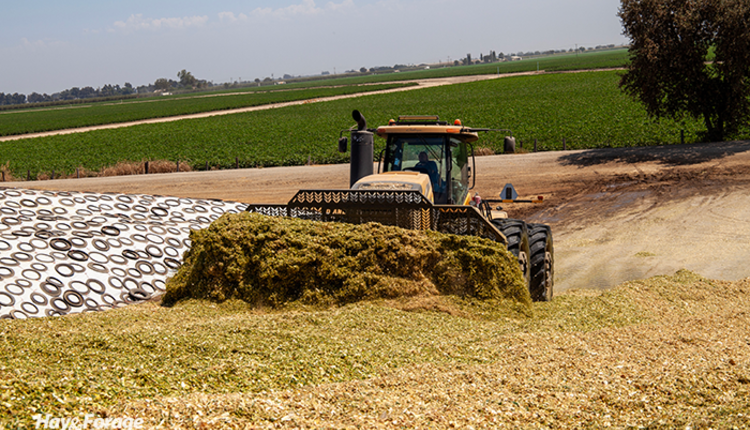
Cows don’t want to eat moldy feed, and farmers don’t want to feed moldy silage. The solution seems simple enough until all of the other factors of corn silage harvest and storage are added to the equation.
In a recent issue of the Midwest Forage Association’s Forage Focus newsletter, Luiz Ferraretto points out the implications that corn silage yeasts and molds can have on animal performance and forage nutritive value. Many times, these contaminants stem from poor harvest and storage practices.
“During harvest, many decisions affecting silage quality and day-to-day operations over the next year or more will be made during a short and stressful period,” writes Ferraretto, a ruminant nutrition extension specialist at the University of Wisconsin-Madison.
It may be hard to think about putting this year’s corn silage into storage before it’s even out of the field, but being proactive can make the difference between a clean crop and a contaminated one. Therefore, Ferraretto offers the following research to help guide silage management.
Studies show . . .
As silage is exposed to oxygen, it loses palatability and becomes less stable. According to Ferraretto, less palatable, unstable feed can depress animal intake. This is demonstrated in a New York study where heifers consuming corn silage removed from a pile immediately prior to feeding had greater feed intakes than animals fed corn silage faced the previous day.
Silage pile management can impact milk production, too. Ferraretto shares a Wisconsin study in which mid-lactation cows were fed a total mixed ration (TMR) that contained either aerobically stable or aerobically unstable high-moisture corn. He reports that despite no difference in feed intake, cows consuming the unstable diet produced 6 fewer pounds of milk per day compared to cows eating the stable feed.
Although some reasons for poor animal performance from unstable silage are still unclear, Ferraretto refers to a Delaware study that may explain how these results are driven by rumen fermentation.
Researchers inoculated ruminal fluid with a yeast culture from high-moisture corn samples at low, medium, and high levels of contamination. They found that the fiber digestibility of the TMR declined by 7 percentage units when ruminal fluid was subject to high contamination versus low contamination, translating to 2,896 and 2,976 pounds of milk per ton of feed, respectively, based on the MILK2024 model.
Yeast contamination can also have direct effects on silage nutritive value, Ferraretto notes. His lab at the University of Wisconsin-Madison replicated the Delaware study, but instead of inoculating ruminal fluid with a yeast culture, the researchers inoculated rehydrated corn grain. After 30 or 90 days of ensiling, the inoculated samples had lower dry matter digestibility.
Keep oxygen out
Ferraretto says good silage fermentation starts with good forage packing to keep oxygen out. The ideal packing density depends on bunker/pile size, forage particle size, dry matter content, packing tractor weight, and the rate of forage delivery. Plan ahead to ensure you have adequate tractor weight and available help to coordinate forage delivery from the field to the storage site.
“Do not overlook equipment cleanliness,” Ferraretto asserts. “Packing tractors may be driven through muddy areas, tracking mud and dirt into silos. This can contaminate silage and increase populations of undesirable microorganisms, such as yeasts and molds.”
Consider inoculating silage with heterofermentative bacteria like L. buchneri, which helps inhibit yeast and mold proliferation. These inoculants convert lactic acid into acetic acid, which has antifungal properties and can prolong heating if silage is exposed to oxygen.
“Make sure to check bags and bunker plastic covers regularly and repair any damaged silo plastic as soon as possible,” Ferraretto adds. “This can ensure the amount of feed damaged is minimal.” If you find rips or tears in the plastic, assess what caused the damage to prevent future issues.

